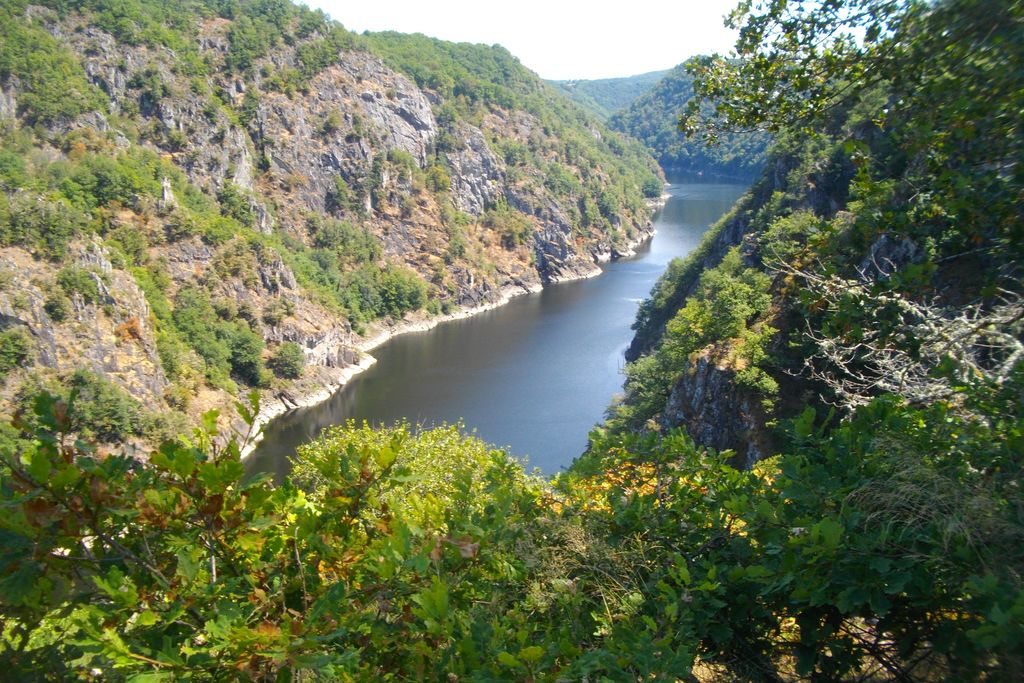
The Milan Trail
5 points of interest
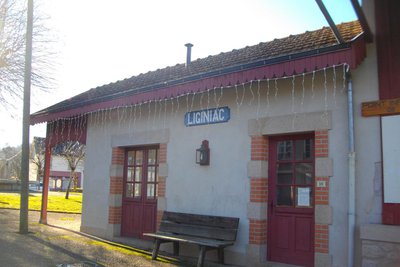
G.Salat - CC HCC  Heritage site
Heritage siteThe old Tacot tramway
Between 1913 and 1959, a tramway called the Tacot operated between Tulle and Ussel, serving Liginiac. The current station is not the Tacot station (which was a little lower) but a station for coaches built on the model of the Tacot stations.
The building is composed of three parts with distinct functions. Its central part dedicated to welcoming passengers is framed by a goods shed with a loading dock and by a large canopy serving as a shelter for passengers.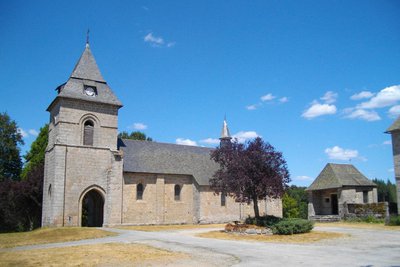
G.Salat - CC HCC  Heritage site
Heritage siteTown of Liginiac
Overlooking the town, the 12th-century church and the old château (now the town hall) will be worth a visit on your return from your walk.
The launch of the tramway accompanied the regrouping and structuring of the town of Liginiac. Consequently, the Rue du Tacot become the main artery of the town, which is now bustling with activity.
Every year at the end of July, the Sculpturama festival of contemporary artistic creation invites artists to highlight the built and natural heritage.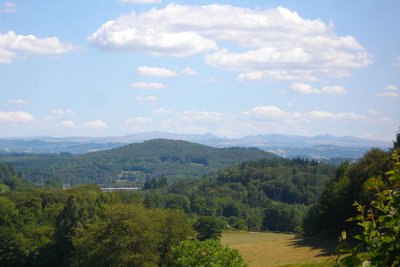
G.Salat - CC HCC  Panorama
PanoramaView of the Cantal Mountains
Beyond the Dordogne, we will see the Monts du Cantal during this hike. This massif is, in fact, the remnant of a stratovolcano born 13 million years ago, the largest in Europe, eroded by collapse and glacial erosion.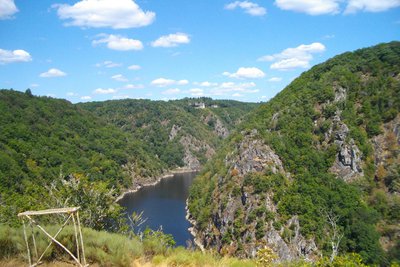
G.Salat - CC HCC  River
RiverThe Dordogne at Roc Grand
Originating in the Massif du Sancy, the river Dordogne merges with the Garonne to form the Gironde estuary.
Between Corrèze and Cantal, the presence of gorges has favoured the construction of hydroelectric dams. The Roc Grand site is located upstream of the Marèges reservoir.
On your left, you can see the Château d'Anglard. Dominating the Dordogne, this fortress occupied a strategic place during the 15th and 16th centuries.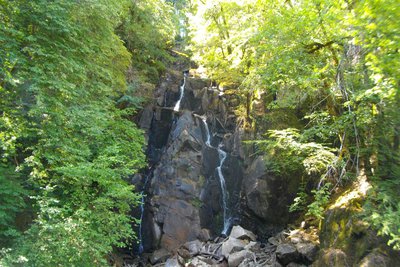
G.Salat - CC HCC  Waterfall
WaterfallThe Saut de Juillac
About twenty metres high, the Juillac waterfall is part of a site classified in 1988 as part of the Roc Grand. The watercourse forming this cascade takes several names: the Froidefont stream at its source, and the l'Eau Large when it passes through Liginiac. Juillac is the name of the village where the waterfall flows into the Dordogne. A tributary of the right bank, the river flows down a slope of about a hundred metres in a succession of falls through the middle of rocky scree.
Description
Departing from the old railway station at Liginiac. Go up to the grocer's shop and turn left on Rue du Roc Grand. Continue straight on through Rue de la Liberté.
- At the last house, follow the tarmac road to the right. At the crossroads after the brook, take the track that goes up to the right. Turn left at the road and go back to the Mont.
- Go through the village; the road becomes a trail. Continue past a path and then a track on your left. At the next crossroads, take the track on the left.
- When you arrive at the interpretation trail, take the trail leading to the belvedere. Make the round trip to the belvedere and then to the waterfall. At the top of the steps, turn right. Turn right at the next crossroads, and then right again to cross the stream by the footbridge. The trail becomes a path that goes to Les Chaux.
- In the village, take the road to the left for 200 m. Cross several fences and enter the meadow following the fence on the right-hand side to return to the road.
- Turn left to reach the Juillac mill. Go around the pond, over the dyke and up a small path. Follow the track on the left to go through Juillac. In the village, take the road on the right to return to Liginiac.
- Departure : The old Tacot railway station
- Arrival : The old Tacot railway station
- Towns crossed : Liginiac
Forecast
Altimetric profile
Recommandations
Be sure to wear sturdy shoes: take care in the vicinity of Roc Grand
No dogs allowed through or in the fields
Information desks
Access and parking
Parking :
Report a problem or an error
If you have found an error on this page or if you have noticed any problems during your hike, please report them to us here:
